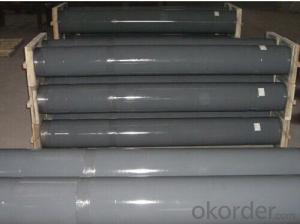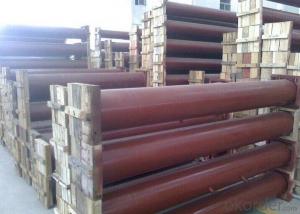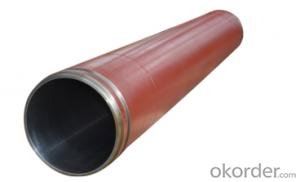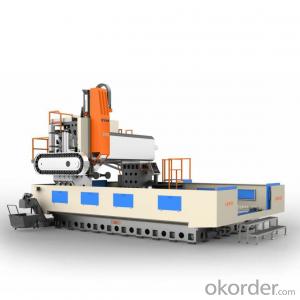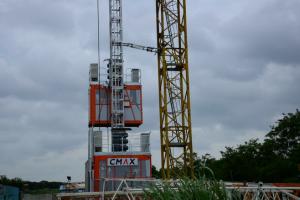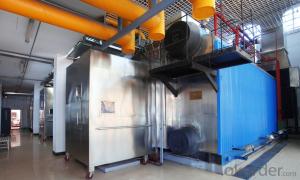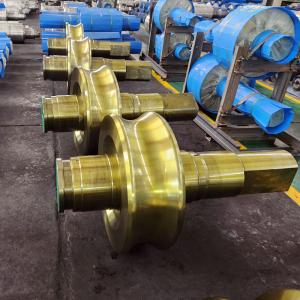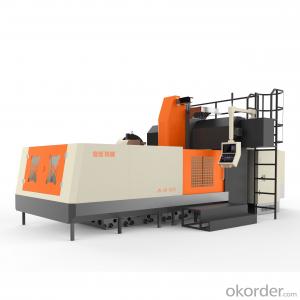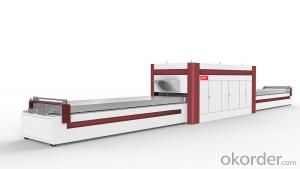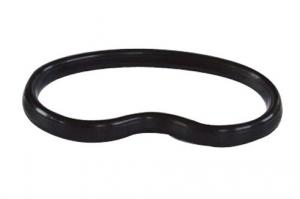PUMPING CYLINDER(PM) I.D.:DN230 CR. THICKNESS :0.25MM-0.3MM LENGTH:1600MM
- Loading Port:
- Shanghai
- Payment Terms:
- TT OR LC
- Min Order Qty:
- 2 pc
- Supply Capability:
- 1000 pc/month
OKorder Service Pledge
OKorder Financial Service
You Might Also Like
Product Description:
The Concrete Pump Delivery Cylinder DN230*1600normally made by steel material No. C45. according to customer’s requests, and also package in bundles or nude packing directly put into container.
Scope of Application of the Cylinders
The Pump Delivery Cylinder DN230*1600 is a Cylinder pumping for combined use with other concrete pumps parts in concrete pumping operations. It can be widely used in the construction of various types of concrete structures like industrial and civil buildings, bridges, roads, and other types of infrastructure.
This Cylinder Cylinder DN230*1600can only be used in concrete pump construction operations, but not in any other operations, like dragging, moving, or hoisting heavy articles or personnel. The pipe is also not allowed to be used in any location where any combustible or explosive material exists or a cave-in may occur.
Specifications:
Concrete Pump Delivery Cylinder DN180*1545
1. Capacity: 60,000~80,000cbm
2. Size: DN180, DN200, DN230.DN250
3. Material: C45
4. quenching and tempering to improve the hardness to HB241-280
5. inner wall chrome thickness is 0.25-0.30mm, hardness HV820-900.
6. Brand: SCHWING, PM, SANY, KYOKUTO, CIFA
7. Capacity: 60,000~80,000cbm
Product Advantages:
OKorder's Cylinders DN230*1600Channels are durable, strong, and safety.
Main Product Features:
· Premium quality
· Prompt delivery & seaworthy packing (10-20 days)
Reliable performance
Easy to weld
High safety.
· Professional Service
· Competitive pricing
Measuring of wall thickness from the outside
Low purchase cost
FAQ:
Q1: How long about delivery time about DN230*1600?
A1: Normally we keep the raw materials for old customers and sometime we also keep stock products to make sure delivery time in any emergency cases.
Q2: How do we guarantee the quality of our Cylinders DN180*1545?
A2: We have established an advanced quality management system which conducts strict quality tests at every step, from raw materials to the final product. At the same time, we provide extensive follow-up service assurances as required.
Q3: How soon can we receive the product after purchase?
A3: Within three days of placing an order, we will book the vessel for goods. The specific shipping date is dependent upon international and government factors, but is typically10 to 30 workdays.
Q4: If we can produce some Cylinders DN230*1600according to customers request?
A4: Yes, we can produce Cylinders DN230*1600according to the difference country situations to make it suitable to the market and customers. We have very professional technical team to make the design.
Q5: How to make a quick resolution for after service?
A5: OKorder and our manufacture both have overseas branches all-around of world.

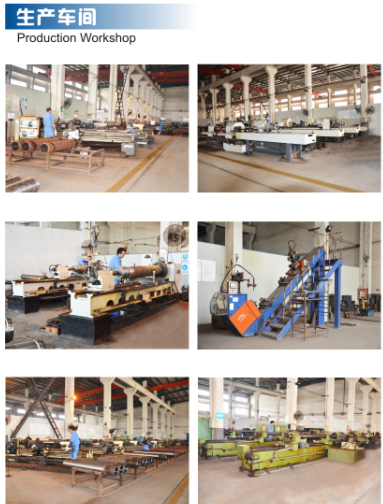
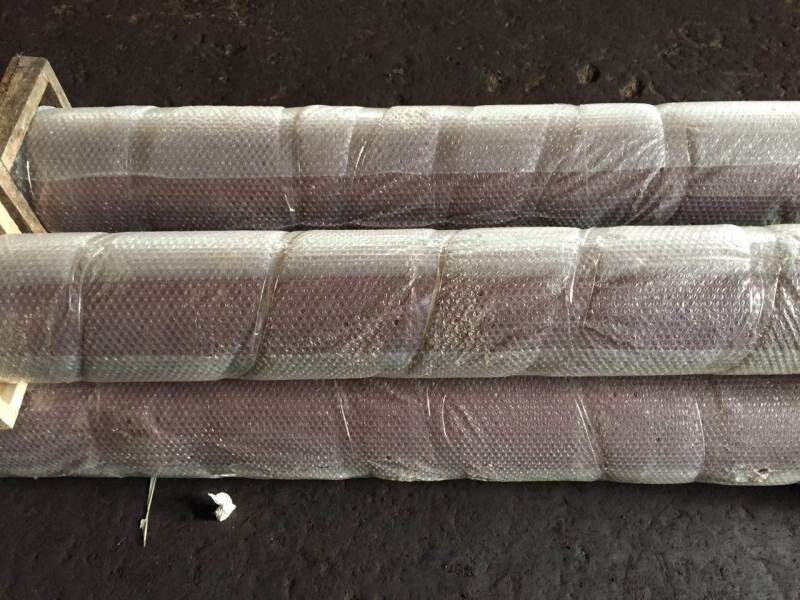
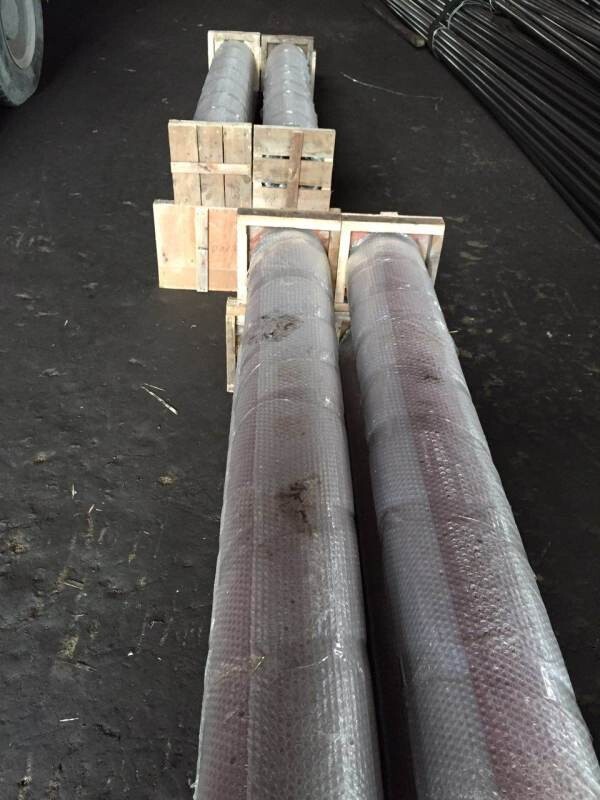
- Q:What are the signs of a damaged concrete pump accumulator?
- There exist multiple indications that point towards a damaged concrete pump accumulator. One of the most prevalent indications is a decline in the efficiency of pumping. Should you observe that the concrete pump is no longer able to effectively pump the concrete as it once did, it may be a sign of an impaired accumulator. Another indication is a reduction in the pressure of the pumped concrete. If you notice that the pressure is not as forceful as before, or if there are sudden pressure drops during pumping, it could signify an issue with the accumulator. Leaks surrounding the accumulator are also indicative of damage. Should you detect any fluid leaks around the accumulator, it may signify damage to the accumulator or worn-out seals. This can result in a loss of pressure and inefficiency in pumping. Unusual noises emanating from the concrete pump can also be an indication of a damaged accumulator. If you hear any peculiar noises, such as knocking or hissing sounds, it may be a consequence of a damaged accumulator. Lastly, if you observe any visible damage on the accumulator itself, such as cracks or dents, it is an obvious sign of damage. These damages can compromise the integrity of the accumulator and impact its performance. In summary, indications of a damaged concrete pump accumulator encompass decreased pumping efficiency, reduced pressure, leaks, unusual noises, and visible damages. Should you notice any of these indications, it is crucial to promptly address the issue to prevent further damage and ensure the smooth operation of the concrete pump.
- Q:Are there any specific quality control measures for the production of concrete pump spare parts?
- Yes, there are specific quality control measures for the production of concrete pump spare parts. These measures include rigorous inspection and testing processes at various stages of production to ensure that the spare parts meet the required specifications and standards. The quality control measures may involve dimensional checks, material testing, performance evaluation, and adherence to industry regulations. Additionally, manufacturers may implement quality management systems, such as ISO 9001, to maintain consistent quality and continuous improvement in the production of concrete pump spare parts.
- Q:How often should a concrete pump wear plate be replaced?
- The replacement frequency of a concrete pump wear plate relies on various factors, such as the type and volume of concrete being pumped, as well as the pump's quality and maintenance. Nonetheless, it is advisable to regularly inspect the wear plate and evaluate its condition, particularly after each concrete pour. Typically, a concrete pump wear plate ought to be replaced once it displays significant wear or damage. Indications of wear can include excessive grooves, cracks, or holes on the plate's surface. Such issues can impact the pump's efficiency and performance, leading to reduced output and potential leaks. In situations where high-intensity pumping operations or abrasive materials are used, the wear plate may experience faster wear and require more frequent replacement. Conversely, if the pump is used infrequently or with less abrasive materials, the wear plate may last longer. It is crucial to note that regular maintenance and proper cleaning of the wear plate can extend its lifespan. This involves eliminating any hardened concrete residue and ensuring a smooth and clean surface. Additionally, lubricating the plate with suitable products can help reduce friction and wear. Ultimately, it is recommended to consult the manufacturer's guidelines and seek advice from experienced professionals to determine the optimal replacement schedule for a concrete pump wear plate, taking into account the specific conditions and usage of the pump.
- Q:Can I get spare parts for concrete pump hydraulic cylinders and valves?
- Yes, spare parts for concrete pump hydraulic cylinders and valves are generally available. It is recommended to contact the manufacturer or a reputable supplier to inquire about the specific parts you need for your concrete pump.
- Q:What is the second generation pumping technology of concrete pump?
- Concrete pump, S pipe distribution without PLC electrical components to participate in, the failure rate is lower, more reliable control, product life has greatly improved
- Q:How can a damaged concrete pump piston affect the pumping efficiency?
- A damaged concrete pump piston can significantly affect the pumping efficiency in various ways. Firstly, a damaged piston can lead to decreased power and force exerted by the pump, resulting in reduced pumping capacity. The piston is responsible for creating the necessary pressure to push the concrete mixture through the pumping system. If it is damaged, it may not be able to generate sufficient pressure, leading to slower and less efficient pumping. Secondly, a damaged piston can cause leaks within the pump system. The piston is a critical component that seals the concrete and prevents it from leaking back into the hopper. If it is damaged or worn out, it may not create a tight seal, resulting in leakage. This not only leads to a loss of material but also reduces the efficiency of the pumping process as the pump has to work harder to compensate for the loss. Furthermore, a damaged piston can also cause blockages and clogs in the pumping system. The piston's movement creates suction, which pulls the concrete mixture into the pump. If the piston is damaged, it may not create enough suction, causing the mixture to flow unevenly or get stuck in the system. This can cause delays and interruptions in the pumping process, reducing overall efficiency. In conclusion, a damaged concrete pump piston can impact pumping efficiency by reducing power and force, causing leaks, and leading to blockages. Regular maintenance and timely repair or replacement of damaged pistons are essential to ensure optimal pumping performance and efficiency.
- Q:How to judge the concrete pipeline blockage?
- When the conveying pressure increases gradually, while the material level of the hopper does not fall, the pipe outlet is not out of stock, the pump vibrates, and the pipe is accompanied by strong vibration and displacement, the pipe blockage can be determined.
- Q:What are the signs of a malfunctioning concrete pump control valve?
- There are several signs that can indicate a malfunctioning concrete pump control valve. Some of the most common signs include: 1. Inconsistent or uneven flow of concrete: A malfunctioning control valve can result in irregular flow of concrete, causing it to be unevenly distributed or even stopping the flow altogether. 2. Pressure fluctuations: If the control valve is not working properly, it can lead to fluctuations in the pressure of the concrete pump. This can cause inconsistent output and potentially damage the pump or other components. 3. Increased noise levels: A malfunctioning control valve may produce unusual or excessive noise during operation. This can be an indication of internal issues or improper functioning of the valve. 4. Leakage or dripping: Another sign of a malfunctioning control valve is the presence of leaks or drips around the valve or its connections. This can indicate seal failure or other problems that need to be addressed. 5. Difficulty in controlling the pump: When the control valve is not functioning correctly, it can become difficult to control the pump's operations. This can include issues with starting or stopping the pump, as well as controlling the speed and direction of the concrete flow. 6. Increased energy consumption: A malfunctioning control valve may result in increased energy consumption as the pump works harder to compensate for the valve's inefficiencies. This can lead to higher operating costs and decreased overall efficiency. If any of these signs are observed, it is important to address the issue promptly. Malfunctioning control valves can lead to costly repairs, downtime, and potential safety hazards. It is recommended to consult a professional technician or service provider to diagnose and resolve the problem.
- Q:What are the indications of a malfunctioning concrete pump water pump?
- There are several indications that can point to a malfunctioning concrete pump water pump. 1. Lack of water flow: One of the most obvious signs of a malfunctioning water pump is a lack of water flow. If the water pump is not working properly, it may not be able to deliver water to the concrete pump, resulting in reduced or no water flow. 2. Reduced water pressure: Another indication of a malfunctioning water pump is reduced water pressure. If the pump is not functioning properly, it may not be able to generate enough pressure to deliver water effectively to the concrete pump. This can result in a weaker or inconsistent water stream. 3. Strange noises or vibrations: Unusual noises or vibrations coming from the water pump can be a sign of a malfunction. If there are any mechanical issues or loose components within the pump, it can cause these abnormal sounds or vibrations. 4. Overheating: A malfunctioning water pump may also overheat due to various reasons such as a clogged filter, worn-out bearings, or faulty motor. Overheating can lead to further damage and may eventually cause the pump to stop working altogether. 5. Leaks: If there are any visible leaks around the water pump, it is a clear indication of a malfunction. Leaks can occur due to damaged seals or gaskets, loose connections, or cracks in the pump housing. These leaks can lead to water loss and reduced pump efficiency. 6. Inconsistent or unpredictable water flow: When the water pump is not functioning properly, it may cause inconsistent or unpredictable water flow. This can result in irregular distribution of water to the concrete pump, affecting the quality and consistency of the concrete being pumped. It is important to regularly inspect and maintain the water pump to ensure its proper functioning. If any of these indications are noticed, it is recommended to immediately address the issue by contacting a professional to diagnose and repair the malfunctioning water pump.
- Q:How much is the pump for a month?
- In the mud, the price is about 25 yuan per square, according to my experience, more than 175000 points per month can pump 7000 yuan, totaling $
1. Manufacturer Overview |
|
|---|---|
| Location | |
| Year Established | |
| Annual Output Value | |
| Main Markets | |
| Company Certifications | |
2. Manufacturer Certificates |
|
|---|---|
| a) Certification Name | |
| Range | |
| Reference | |
| Validity Period | |
3. Manufacturer Capability |
|
|---|---|
| a)Trade Capacity | |
| Nearest Port | |
| Export Percentage | |
| No.of Employees in Trade Department | |
| Language Spoken: | |
| b)Factory Information | |
| Factory Size: | |
| No. of Production Lines | |
| Contract Manufacturing | |
| Product Price Range | |
Send your message to us
PUMPING CYLINDER(PM) I.D.:DN230 CR. THICKNESS :0.25MM-0.3MM LENGTH:1600MM
- Loading Port:
- Shanghai
- Payment Terms:
- TT OR LC
- Min Order Qty:
- 2 pc
- Supply Capability:
- 1000 pc/month
OKorder Service Pledge
OKorder Financial Service
Similar products
New products
Hot products
Related keywords
